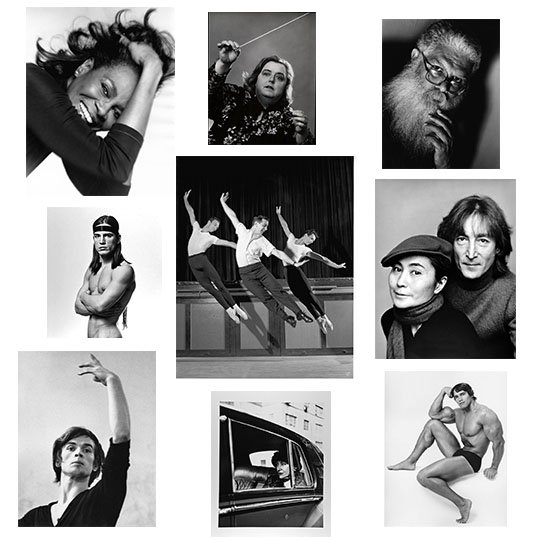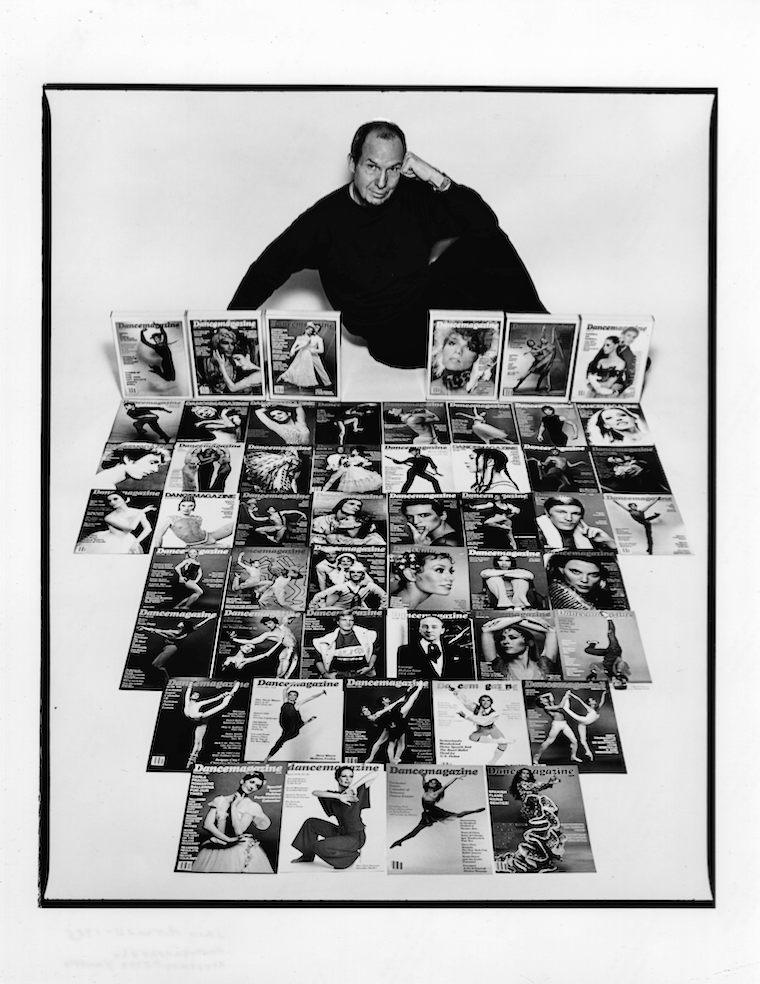GME is Proud to Announce our Exclusive Partnership with the Jack Mitchell Archive
/“When you would go to Jack’s studio there were photographs on the walls of everyone famous that you ever knew. Everyone on Broadway, movie stars, dancers, whatever, and each shot looked like Jack had known them from the day they were born. He pulled the uniqueness out of you regardless of whether you wanted it pulled out of you or not.”
- Judith Jamison, Artistic Director, the Alvin Ailey Dance Company
Over the course of a career spanning more than half a century, Jack Mitchell (1925 – 2013) photographed dancers, artists, musicians, writers, and film and theatre performers, in more than 6,000 individual sessions. As part of GME’s ongoing commitment to further the legacy of photographers and their work, we are proud to announce an exclusive partnership with the Jack Mitchell Archives. Our goal is to place this unique and comprehensive collection with a major cultural institution, to secure high-profile exhibitions of his photographs worldwide, and to make available the licensing rights to these reproduced images.
Born in Key West in 1925, Mitchell moved to New York City in 1950. At the suggestion of modern dance pioneer Ted Shawn, he first concentrated on photographing dancers. William Como, editor of Dance Magazine (and later editor and publisher of After Dark magazine) assigned Jack to shoot many cover photographs for the publication. He photographed the Alvin Ailey American Dance Theater over the course of three decades and was the official photographer of the American Ballet Theater for ten years (which included a command performance of the company for the Kennedys at the White House). He also photographed dancers for other top ballet companies in the US and Canada, as well as many major choreographers of modern dance. Mitchell’s work appeared on more than 160 covers of Dance Magazine.
In the 1960's The New York Times Arts and Leisure editor Seymour Peck and photo editor Lonnie Schlein became aware of Jack Mitchell’s work and began giving him freelance assignments to photograph major artists and performers that were then regularly published in this newspaper. His work also graced the covers of virtually every major domestic and international magazine, including People, Newsweek, Time, Life, Vogue, Vanity Fair, The Saturday Evening Post, Rolling Stone, Madame Figaro (France) and Stern (Germany). Mitchell’s career in New York City was filled with photo assignments and cultural and social events with personal friends including Broadway star Patti LuPone, composer Ned Rorem, dancers Judith Jameson, Kevin McKenzie, and Merce Cunningham, critic Clive Barnes, playwright Edward Albee and Hollywood icons Gloria Swanson and Veronica Lake.
As a teenager Jack had experimented with dramatic lighting, aperture settings, depth of field and shutter speed – all the technical devices to achieve a trademark look. From his study of dance, he learned to direct his subjects and to choreograph them for the camera. Mitchell’s ability to capture performers in what he termed “moving stills” made him one of the most important dance photographers of the 20th century.
For many photo sessions he planned in advance and sketched out his ideas. But he also had the ability to respond instantly to his subjects and knew intuitively how to get them to drop their defenses and shed their public image of themselves, capturing them in a fresh, new light. Jack Mitchell was one of the last artists to photograph John Lennon and Yoko Ono just days before Lennon was murdered. Pictures from that session demonstrate how talented he was at putting his subjects at ease and capturing their candid selves.
After his retirement from the The New York Times assignments in 1995, Jack Mitchell returned to Florida, where he continued to make prints from his negatives. Beginning in the early 2000’s, filmmaker Craig Highberger began collaborating with Jack Mitchell on the photographer’s archive. He directed a feature-length documentary about Mitchell’s career, entitled “Jack Mitchell: My Life in Black and White” (2006), as well as “Superstar in a Housedress” (2004), inspired by Mitchell’s photographs of Warhol superstar Jackie Curtis.
Jack Mitchell died peacefully in his home on November 7, 2013 surrounded by his closest friends and the life’s work that he loved.
JACK MITCHELL’S LEGACY
In his will, Mitchell left to Highberger his entire photographic legacy, including the complete physical archive and the licensing rights to the photographs. HIghberger subsequently continued to process Mitchell’s collection. In 2020, Highberger selected Gartenberg Media Enterprises (GME) as the exclusive representative of the Jack Mitchell Archive for placement of the collection with an archival institution, for organizing and promoting high profile exhibitions of his work in major metropolitan centers in both the US and abroad, and for acquisition of the copyright to these photographs (that have already generated a significant licensing revenue stream over the past decade). Highberger states that “because the GME team of Jon Gartenberg and David Deitch both have backgrounds working in the fine arts field, they are inspired by the artistic and historic importance of the select group of collections which they have previously placed in cultural institutions. I am therefore pleased to have GME fully on board with finding a permanent home for the Jack Mitchell archive.”
GME’s headquarters is in New York City, led by former MoMA curator Jon Gartenberg. Collaborating with Gartenberg is David Deitch, GME’s Fine Arts Curator, who has worked in both museums and art galleries, curated exhibitions, and made presentations to the ASPP (American Society of Picture Professionals) and APAG (American Photography Archives Group) about GME’s photography collections. Deitch oversees the archives of photographers’ estates for GME. “A discovery for me,” Deitch says, “were the hundreds of photographic body studies contained in the collection. Mitchell was a keen observer of the lines and contours of individual physiques and how they moved in space. He was an organizer who planned each session beforehand and produced images in his small studio that often challenged the laws of gravity and the constraints of the actual physical environment.”
GME’s representation of the Jack Mitchell Archive encompasses the sale of all of the physical materials – Mitchell’s appointment books dating from 1968 on; index cards that catalogue by artist each and every number of his more than 6,000 individual photo sessions; the corresponding negatives, contact sheets, prints and transparencies related to these shoots (both black and white and in color); high resolution digital images of the individual photographs; innumerable publications in which these photographs appeared; scrapbooks, articles and lectures by Mitchell; published books in which his photographs appeared; his camera equipment; and the two documentaries directed by Craig Highberger (including important outtake interviews of Mitchell’s colleagues). According to Gartenberg, based on a detailed inspection of the collection over the course of a week-long onsite visit to the archive, “The Jack Mitchell Archive is extraordinary, not only for the superb visual quality of the images, but also for the study value of the collection in that it documents Mitchell’s creative process from his booking appointments all the way through to the final published photograph.”
GME’s overall objective is to further elevate the significance of Jack Mitchell’s photography career within the larger artistic, cultural and public spheres. The acquisition of this archive by a noteworthy cultural institution would secure the legacy of this unique collection of iconic photographs by an historically significant, yet under-recognized photographer.
Click here for the full presentation of GME's partnership with the Jack Mitchell Archive, including full photo galleries, videos and news.
THE JACK MITCHELL ARCHIVE Click here for Visual Gallery of Collection Contents
All photographs © The Estate of Jack Mitchell







